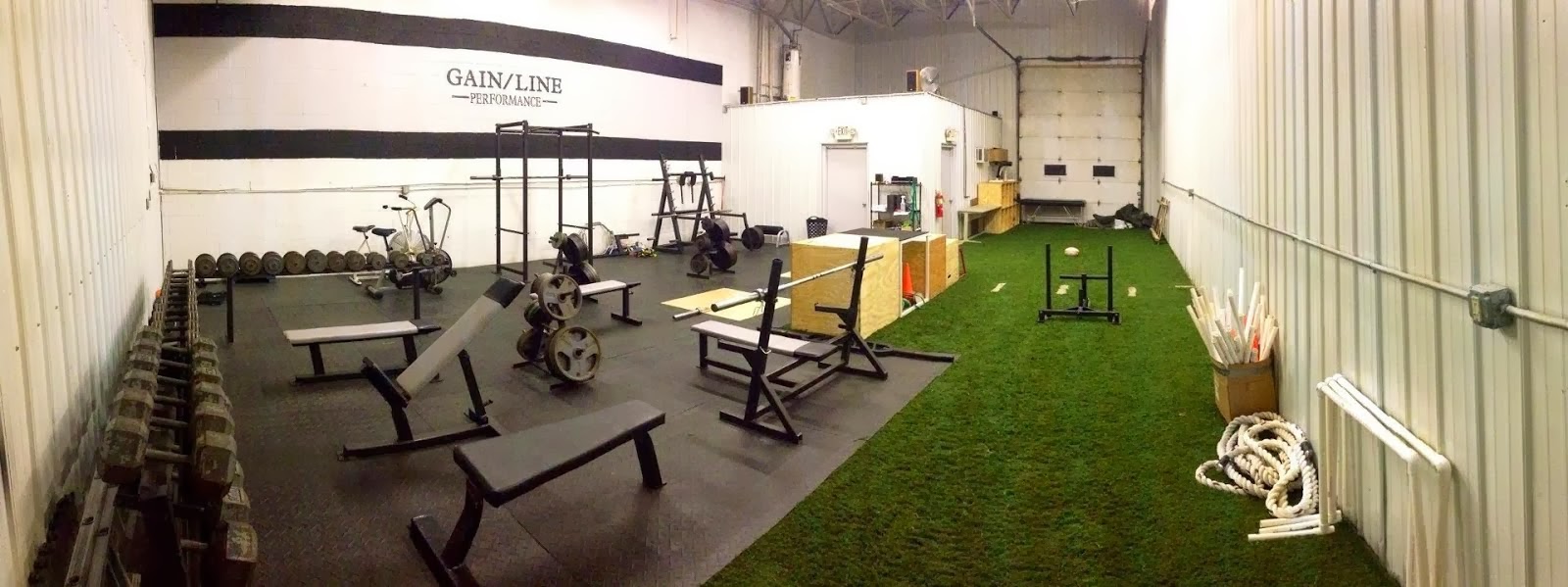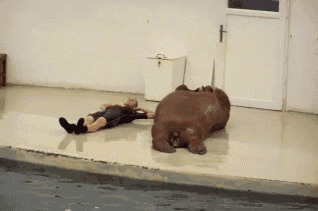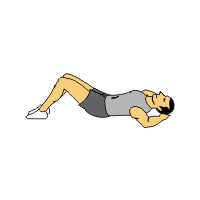So nine months ago I posted a piece titled Ab-Natomy Volume
1 detailing our current obsession with abdominal training, a bunch anatomy
stuff (the part you skipped over) and many of the common myths associated with
said training. If you missed part one you
can find it here. As I mentioned in the
first addition of Ab-Natomy, I had originally planned on writing a single post
addressing abdominal training. However,
as I went along, it became apparent that the intended content would be better
addressed through two separate writings.
I came to this conclusion for a couple of reasons; firstly, it would
allow me to avoid jumping around too much from concept to concept, inevitably
watering down talking points and secondly, well, I was ready for a break from
the computer screen.
As promised, Ab-Natomy 2 will seek to enlighten the
readership on abdominal training specifically aimed at athletic performance. Warning, the ideas expressed will require a
degree of open-mindedness and an ability to think critically. It’s certainly not rocket science, but a
departure from how we traditionally view muscles and their roles in movement
must take place. I will do my best to provide
examples that should ease this process.
So without further ado, let us move fourth into the world of Ab-Natomy
Volume 2.
The first question that needs to be addressed if we are to
develop a better understanding of how to train the abdominal region for
athletics, is what’s wrong with the
prevailing abdominal training philosophy?
You know the one that includes extreme amounts of floor based crunching
(flexion) and twisting (rotation). Well,
it’s predicated on an overly simplistic model of abdominal muscle
function. One in which only concentric
muscular contraction is taken into any real consideration and focuses on the
creation of movement almost exclusively.
Next question, how can things be done better? To start, forget everything you've ever been
taught about how to train your abs (what your high school football coach taught
you, what you've read in Muscle and Fiction magazine, what you see every day at
the gym, etc). This next portion is
going to require you to work from something of a clean slate. Now let’s begin to apply some logic and
examine how the abdominal musculature actually functions in the world of
athletics.
Here is one of my favorite examples of how things really
work. Riddle me this, if I asked you to
perform a 100% effort sprint and you didn't have abs, what would happen? If you’re still scratching your head, do me a
favor. Stand up, press the tips of your
fingers firmly into your upper abs (gold star for anyone who can recall the
actual name of the muscle you are currently pressing against), pick up one foot
so that you are standing on a single leg and relax your abs so that your
stomach becomes relatively soft. Once
here, lean backwards and take note of what happens.
Congratulations, you've just exposed yourself to a brief
glimpse of how the abs generally function during everyday activity. What you should have noticed was a
contraction taking place within your rectus abdominus as soon as your trunk
started to deviate away from its center of gravity. This particular contraction likely either
halted the backward motion of the trunk entirely (isometric contraction), or created
a significant slowing of the trunks backward momentum (eccentric contraction). Now think about my earlier question
again. What would have happened to your
torso during that ab-less sprint? I’m
not sure if being able to touch the back of your head to your heels is healthy.
How’s that mental image treating you?
This particular example provides us with the ground work to
begin understanding how the abdominal region works in athletics. Our core musculature helps to absorb,
transfer, stabilize, resist force and movement as we sprint, jump, cut, tackle,
swing, throw, etc. Much of this work
takes place via isometric (contraction in the absence of any change in muscular
length) and eccentric (contraction in the presence of muscle lengthening)
muscular contraction as the body seeks a platform of pelvic and spinal
stability from which the limbs can work.
The traditional abdominal training model misses the boat almost entirely
with regards to training stability and resistance to movement. It is imperative that we train the abdominals
to be proficient in the likes of anti-extension (resistance to extension) and
anti-rotation (resistance to rotation) to ensure that the core can maximize its
ability to enhance systemic athletic performance. Here are a few examples of the abdominals
taking on the role of anti-extensors and anti-rotators in the real world:
 |
| What is keeping these two from folding backwards like pretzels? A great deal of Anti-extension from their abdominal region, that's what. |
 |
| Can't tell me his abs aren't playing a significant role here. Anti-extension / Anti-rotation |
 |
| This little girl's bike has some serious anti-extension strength |
 |
| Anti-extension / Anti-rotation |
 |
| Why your abs are sore after jump training (Anti-extension at its finest) |
 |
| Same as above but with a view from the sagital plane |
With all this in mind, that strange phenomenon of incredibly
sore abs following a sprint or jump training sessions should be starting to
make sense. Furthermore, does doing
hundreds of crunches still seem logical as a means to train your abdominal
region for athletic greatness? Before
everyone goes and gets their undergarments in a twist, I’m not advocating for a
complete removal of flexion based abdominal work; just a significant reduction
in its volume to make way for a more well-rounded approach.
In order to properly condition the abs for athletics there
are a few things that we must address within our programing. First, training emphasis should shift from a
trunk motion focus to one of trunk stabilization. Second, exercises designed to train abdominal
force transfer must be included and coached appropriately. Third flexion based training volume should be
reduced and progressed from simple isolation style exercises to larger
movements requiring integrated muscle involvement; and finally, some form of
dynamic pelvic and spinal stability training should be utilized.
Let’s take a moment to briefly break down each of the points
above:
Shifting Focus from
Movement to Stability
Traditional abdominal training places heavy emphasis on
things like crunches, Russian twists, sit-ups etc. While these motions likely have a place in a
training regimen, the reality is that they probably shouldn’t make up the
lion’s share of your abdominal work where athletic functionality is concerned. Planking variations, roll-outs, push-up
variations, suspension trainer flutters, Palof presses, cable push-pulls,
single arm presses and others can help to develop a strong and stable abdominal
region.
Moral of the story, trade these,
for theses.
 |
| Planking Variations (Anti-extension) |
Stability Ball Roll-outs (Anti-extension)
 |
| Push-up Variations (Anti-extension) |
Palof Press (Anti-rotation)
Cable Push-Pull (Anti-rotation)
Suspension Trainer Flutters (Anti-extension)
Single Arm Press (Anti-rotation)
Abdominal Force
Transfer
When you really look hard at athletic movements,
as stated earlier, the abdominal region does much more bracing to allow for
force generated from the legs to transfer to the arms. Yet with something like a baseball swing we consistently
see trainers advocating movements that isolate the abdominals in a rotary
pattern, creating trunk motion independent of the hips and lower body. Take a look at the video and photo
below. Pay close attention to the
synergy between the hips and the abdominal region. What do you see? Notice how the buttons on his shirt track in
unison with his belt buckle almost perfectly the entire time. Force for the swing is generated from the
back leg, up through the hips, transferred across the abdominal region to the
arms and finally through the bat.
Why are we locking the hips down in the gym?
 |
| Let the hips go son! |
Tennis and hockey clips offer similar examples.
Are we starting to notice the trend?
Here’s a quick
and easy assessment that anyone can do. Which one looks more athletic?
or
Not a difficult choice, is it?
Exercises such as medicine ball throws, landmine rotational
presses and band / cable rotations are all good options for teaching the body
to effectively transfer force across the abdominal region, so long as the hips
are cued to move naturally, a stable spine is maintained and the rotational
component is occurring through the hips and not being driven through the lumbar
spine.
Flexion Based Continuum
Flexion based abdominal training has taken some serious heat
over the past few years as reports questioning its safety in regards to spinal health
have surfaced. More recently the
question of how much emphasis we should be putting on these findings have
emerged, as a large portion of the research was done in vitro and may have
missed possible active stability mechanisms provided to the spine by living,
fully functioning non-passive tissues. Given
the current information available, it would seem prudent to take precaution by
limiting the volume of flexion based movements while maintaining some level of
strength within the flexion pattern. Because
crunches and exercises similar in nature do a solid job of teaching an
individual how to isolate and contract the abdominal region, they are not a bad
place to start. With that said I would
prefer that they be used sparingly and integrated into more complex movements
such as the Turkish Get-Ups and various forms of medicine ball slams once the
trainee has obtained appropriate motor control over the abdominal
musculature.
The idea is to move from these
To these
Turkish Get-Up
Medicine Ball Slam
Dynamic Core
Stability Training
Because the abdominals don’t work in an isolated state on
the field, court or ice, it’s important that they receive some stimulus within a dynamic environment during training.
This is probably easier done than one might think. Including some maximal effort sprinting and
jumping in your program can go a long way to address this need. Additionally, unsupported overhead work,
weighted carries (farmer’s walks & waiter’s carries) are a great inclusion
into any core training program and are easily progressed and made more challenging
by shifting from bilateral to unilateral variations.
Waiter's Carry (Unilateral)
Farmer's Walk (Bilateral)
Farmer's Walk (Unilateral)
Any dynamic overhead work (overhead walking lunges shown here)
In Closing:
The extent to which each of the above noted items should be emphasized within a given training regimen will vary based on factors such as individual strengths and weakness, given sporting code, training phase, etc. Whatever the case may be, if you’re missing any one of the components you’re likely selling yourself short where abdominal development is concerned.
So there you have it, a quick and dirty crash course on training the abdominal region for athletic excellence. The key point to remember is that the abdominals role goes significantly further than simply flexing the trunk forward, their purpose is much more sophisticated than that. The abdominals could very well be the body's equivalent to The Most Interesting Man in the World.
Who would have guessed endless
crunches and leg-lifts would not be the answer?
If this is still confusing, please proceed back to the top of this
article and re-read. Repeat as
needed. Until next time, happy training.
The extent to which each of the above noted items should be emphasized within a given training regimen will vary based on factors such as individual strengths and weakness, given sporting code, training phase, etc. Whatever the case may be, if you’re missing any one of the components you’re likely selling yourself short where abdominal development is concerned.
So there you have it, a quick and dirty crash course on training the abdominal region for athletic excellence. The key point to remember is that the abdominals role goes significantly further than simply flexing the trunk forward, their purpose is much more sophisticated than that. The abdominals could very well be the body's equivalent to The Most Interesting Man in the World.
 |
| The Most Interesting Muscles in the World. |























